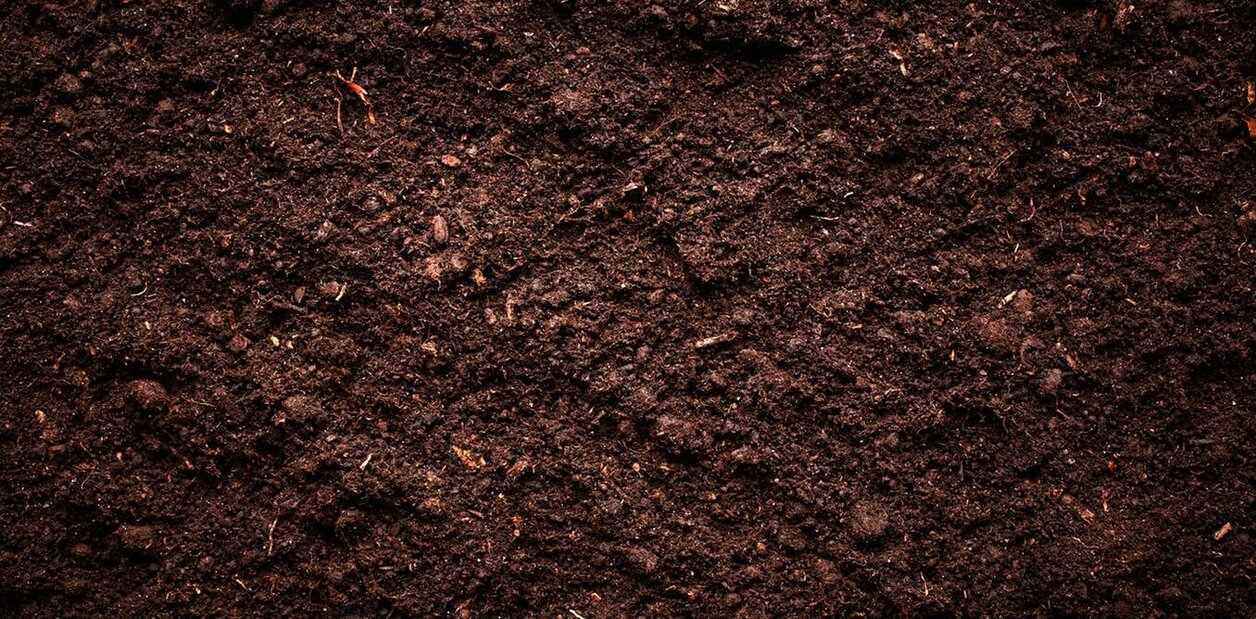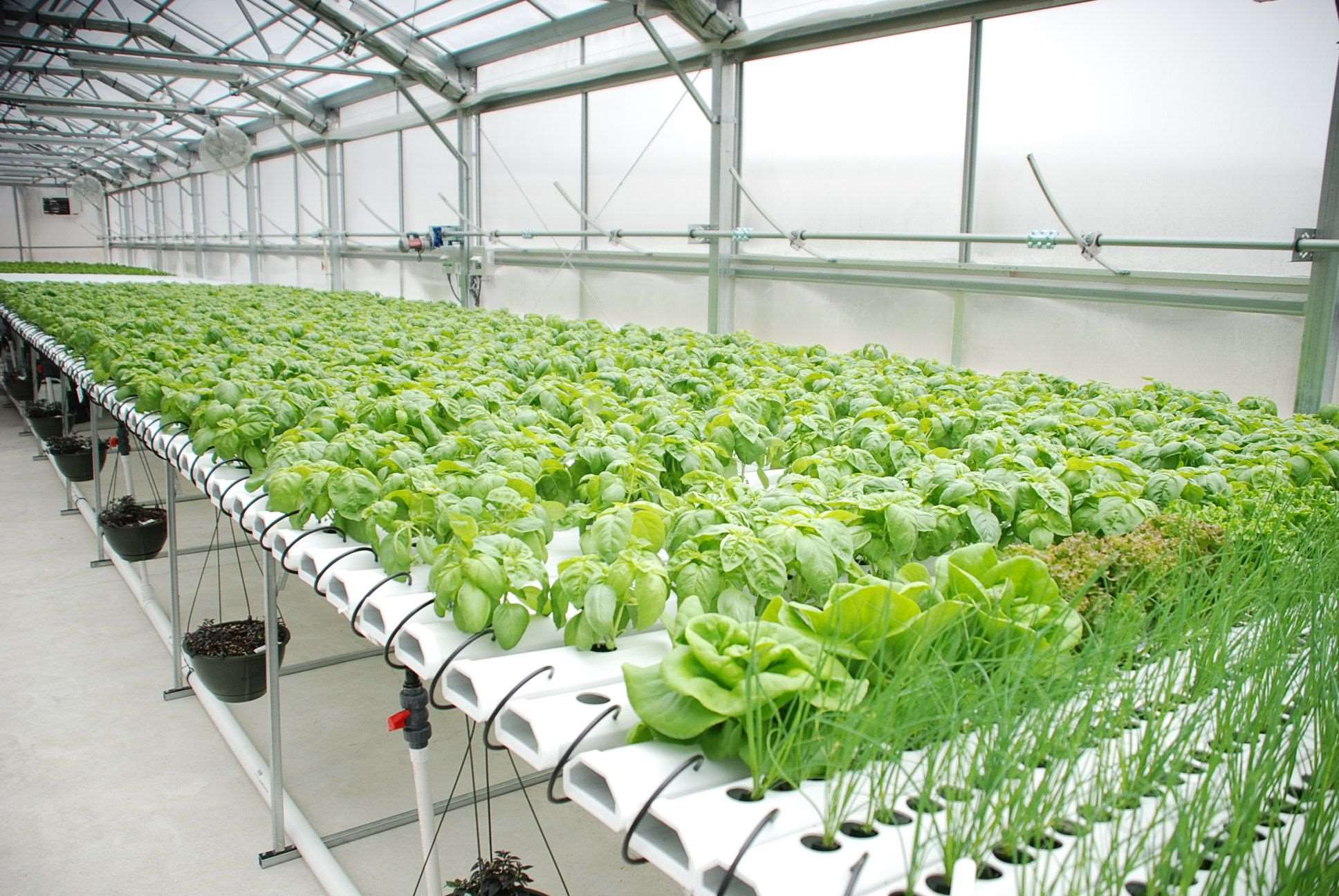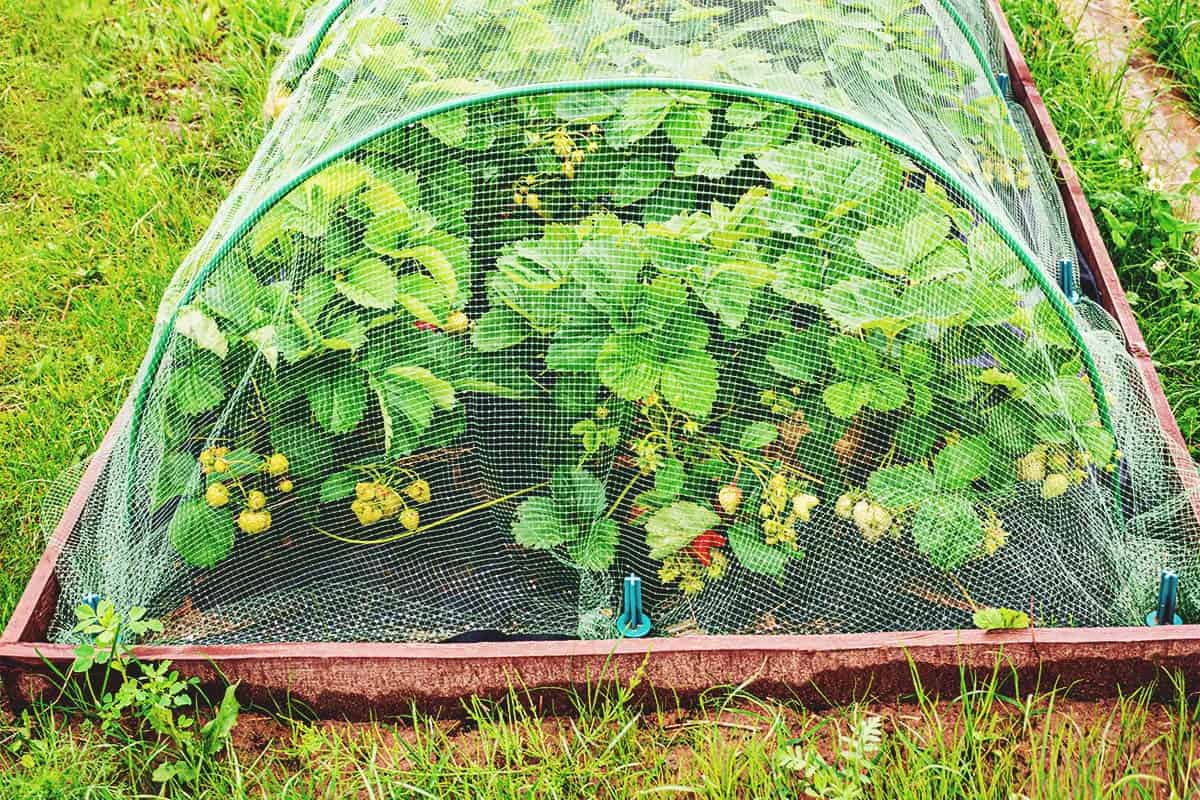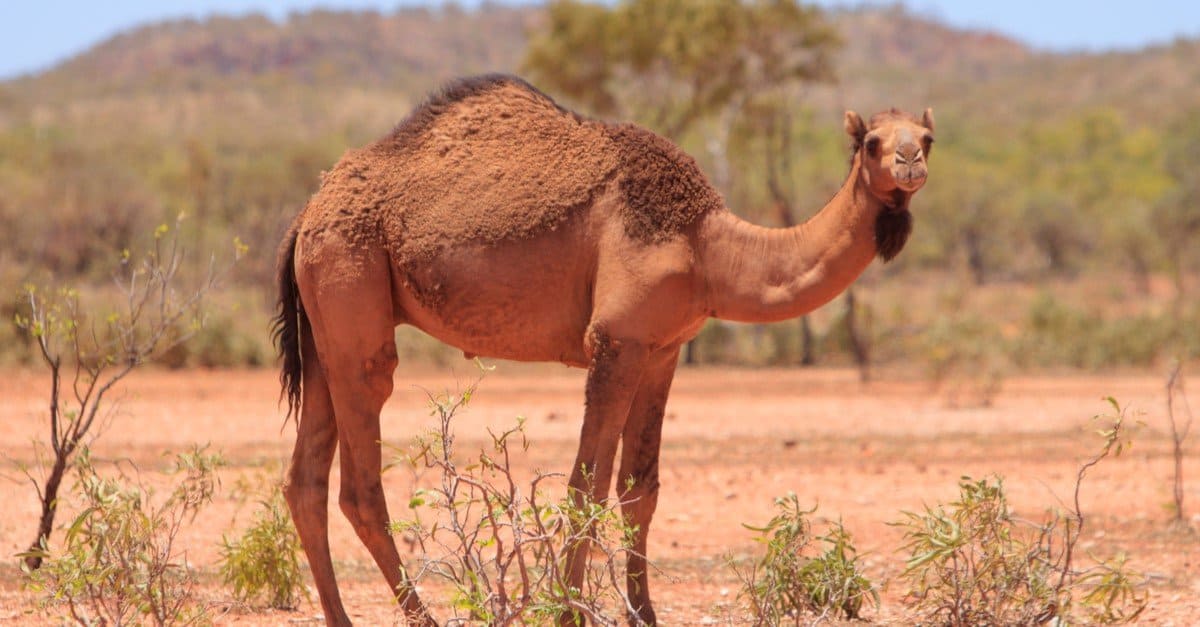Home>Gardening Basics>Understanding Soil>Which Part Of Topsoil Contains Decayed Plant And Animal Matter


Understanding Soil
Which Part Of Topsoil Contains Decayed Plant And Animal Matter
Modified: February 5, 2024
Understand soil better by learning which part of topsoil contains decayed plant and animal matter.
(Many of the links in this article redirect to a specific reviewed product. Your purchase of these products through affiliate links helps to generate commission for Chicagolandgardening.com, at no extra cost. Learn more)
Table of Contents
- Introduction
- Definition of Topsoil
- Importance of Decayed Plant and Animal Matter in Topsoil
- Factors Affecting the Accumulation of Decayed Plant and Animal Matter in Topsoil
- Breakdown of Decayed Plant and Animal Matter in Topsoil
- Role of Decomposers in Decomposition of Organic Matter in Topsoil
- Nutrient Cycling in Topsoil
- Conclusion
Introduction
Welcome to the fascinating world of topsoil! When it comes to understanding soil, topsoil plays a crucial role in supporting plant growth and sustaining ecosystems. It is the uppermost layer of soil, typically 2-8 inches deep, where the majority of plant roots are found. Topsoil contains a wide array of components, including minerals, nutrients, water, air, and organic matter. This organic matter, often in the form of decayed plant and animal matter, is of particular importance in the health and fertility of the soil.
Decayed plant and animal matter, also known as organic matter or humus, is a vital component of topsoil as it contributes to its structure, fertility, and overall quality. It is the product of the decomposition process that occurs naturally in soil over time. This process involves the breakdown of once-living organisms, such as leaves, grass, roots, insects, and even small animals, into simpler compounds that can be readily absorbed by plants.
The accumulation of decayed plant and animal matter in topsoil is influenced by various factors, including climate, vegetation type, soil composition, and land management practices. In some environments, such as temperate forests or grasslands, organic matter can accumulate rapidly due to high plant productivity and slow decomposition rates. In contrast, in arid regions or areas with intensive agriculture, organic matter content may be lower due to faster breakdown rates and limited plant residue input.
Definition of Topsoil
Topsoil refers to the uppermost layer of soil, typically located between the surface and a depth of about 2-8 inches. It is often called the “A horizon” and is crucial for supporting plant growth and providing essential nutrients. Topsoil is a dynamic and complex mixture of minerals, organic matter, water, air, and living organisms.
The composition of topsoil can vary depending on the location and geological factors. It usually consists of sand, clay, silt, and organic matter. These different particle sizes contribute to the soil’s texture, which influences its ability to retain water and nutrients.
The organic matter in topsoil is critical for its fertility and overall health. It is made up of decayed plant and animal matter, also known as humus, and is rich in carbon and nutrients. This organic matter provides a host of benefits, including improving soil structure, enhancing nutrient holding capacity, increasing water retention, and promoting beneficial microbial activity.
Topsoil is a finite resource that is essential for supporting agricultural production, maintaining ecosystem health, and mitigating the impacts of climate change. However, topsoil erosion and degradation are significant concerns worldwide. Factors such as improper land management practices, deforestation, overgrazing, and intensification of agriculture contribute to the loss of topsoil.
Understanding the importance and characteristics of topsoil is essential for sustainable land management practices. By protecting and enhancing topsoil health, we can ensure the long-term productivity and sustainability of our agricultural systems and ecosystems.
Importance of Decayed Plant and Animal Matter in Topsoil
Decayed plant and animal matter, also known as organic matter or humus, plays a crucial role in the health and fertility of topsoil. It contributes to soil structure, nutrient availability, water holding capacity, and overall soil quality. Here are some key reasons why decayed plant and animal matter are important:
- Nutrient Recycling: Organic matter contains essential nutrients such as nitrogen, phosphorus, potassium, and micronutrients. These nutrients are released slowly as organic matter decomposes, providing a continuous supply of nutrients for plant growth. The presence of organic matter in topsoil improves the nutrient holding capacity, reducing the risk of nutrient leaching and runoff.
- Improving Soil Structure: Organic matter acts as a binding agent, enhancing soil aggregation and creating pore spaces. This improves soil structure, allowing for better root penetration and water movement. Crumbly and well-structured topsoil can hold moisture, air, and nutrients more effectively, promoting healthy root development.
- Enhancing Water Holding Capacity: Organic matter acts like a sponge, capable of holding water in the soil. It helps prevent excessive water runoff and improves water infiltration and retention. This is particularly important in dry regions or during drought conditions, as organic matter can store water for plants to access during periods of water scarcity.
- Promoting Beneficial Microbial Activity: Organic matter provides a food source for a diverse range of soil microorganisms, such as bacteria, fungi, and earthworms. These organisms play vital roles in nutrient cycling, decomposition, and soil health. Increased microbial activity facilitated by organic matter promotes the release of nutrients from organic compounds, making them more readily available for plant uptake.
- Reducing Soil Erosion: The presence of organic matter in topsoil helps to stabilize soil particles, reducing the risk of erosion caused by wind or water. Organic matter acts as a protective layer, preventing soil from being washed away and improving its resistance to erosion.
Overall, the presence of decayed plant and animal matter in topsoil is crucial for maintaining soil fertility, supporting plant growth, and promoting sustainable agriculture. It maximizes nutrient availability, improves water holding capacity, enhances soil structure, and fosters a vibrant soil ecosystem. Protecting and increasing organic matter content in topsoil is essential for preserving soil health and ensuring long-term food security.
Factors Affecting the Accumulation of Decayed Plant and Animal Matter in Topsoil
The accumulation of decayed plant and animal matter, also known as organic matter or humus, in topsoil is influenced by various factors. These factors interact and vary across different ecosystems and land management practices. Understanding these factors is crucial for maintaining and enhancing organic matter content in topsoil. Here are some key factors affecting the accumulation of decayed plant and animal matter in topsoil:
- Climate: Climate plays a significant role in the rate of organic matter decomposition. In cold or arid climates, decomposition rates tend to be slower, leading to higher organic matter accumulation. In contrast, in warm and humid climates, decomposition rates are faster, resulting in lower organic matter content. The temperature and moisture levels influence the activity of decomposer organisms, which drive the breakdown of organic matter.
- Vegetation Type and Productivity: Different types of vegetation influence the input of organic matter into topsoil. Plant species with high productivity, such as forests or grasslands, contribute more organic matter through leaf litter, fallen twigs, and root debris. These ecosystems typically have higher organic matter accumulation rates due to the continual input of plant residues.
- Soil Composition: Soil composition, including the percentage of sand, silt, and clay particles, affects organic matter accumulation. Sandy soils have lower organic matter content compared to soils with higher clay or silt fractions. This is because sandy soils have larger pore spaces, allowing for faster decomposition and leaching of organic matter. Soils with a higher clay or silt content have smaller pore spaces, which facilitate the retention and accumulation of organic matter.
- Land Management Practices: Human activities and land management practices can have a significant impact on organic matter accumulation in topsoil. Practices such as no-till farming, cover cropping, composting, and organic amendments can increase organic matter content. Conversely, intensive agricultural practices, excessive tillage, and removal of crop residues can lead to a decline in organic matter levels.
- Land Use Changes: Changes in land use, such as deforestation or urbanization, can result in a decline in organic matter content. Clearing vegetation reduces the input of plant residues, and changes in soil disturbance and compaction can affect the activity of decomposer organisms. These changes can lead to accelerated organic matter decomposition and a decrease in its accumulation over time.
A combination of these factors, along with others, determines the organic matter content in topsoil. It is essential to consider these factors when managing land and implementing practices that promote the accumulation and preservation of organic matter in topsoil. By ensuring healthy organic matter levels, we can enhance soil fertility, sustainability, and ecosystem resilience.
Breakdown of Decayed Plant and Animal Matter in Topsoil
The breakdown of decayed plant and animal matter, also known as organic matter or humus, in topsoil involves a complex process of decomposition. This process is driven by various organisms, including bacteria, fungi, and soil invertebrates, and is influenced by environmental factors. Understanding the breakdown of organic matter in topsoil is vital for nutrient cycling and soil health. Here is an overview of the breakdown process:
1. Fragmentation: The initial breakdown of organic matter in topsoil begins with the physical fragmentation of plant and animal residues. This occurs through processes such as shredding by earthworms, fragmentation by microorganisms, or mechanical action of soil-dwelling organisms.
2. Chemical Change: Microorganisms, mainly bacteria and fungi, play a crucial role in the chemical breakdown of organic matter. These decomposers secrete enzymes that break down complex organic compounds into simpler forms, such as sugars, amino acids, and organic acids. This process is known as mineralization.
3. Microbial Decomposition: The decomposed organic compounds are further metabolized by microorganisms to produce energy for their growth and reproduction. During this process, microorganisms release carbon dioxide (CO2) and other byproducts as waste products.
4. Nutrient Release: As organic matter decomposes, essential nutrients such as nitrogen, phosphorus, potassium, and micronutrients are released into the soil. These nutrients become available for uptake by plants and contribute to the fertility of the topsoil.
5. Humification: Over time, the decomposed organic matter undergoes a process called humification. This involves the formation of stable humus, a dark-colored substance that is resistant to further decomposition. Humus contributes to soil structure, water holding capacity, and nutrient retention in topsoil.
Environmental factors such as temperature, moisture, and oxygen availability influence the rate and efficiency of organic matter breakdown. Warmer temperatures and adequate moisture levels promote microbial activity and faster decomposition rates. Additionally, aerobic conditions, where oxygen is present, favor the activity of aerobic microorganisms that commonly decompose organic matter.
The breakdown of decayed plant and animal matter is crucial for nutrient cycling in topsoil. It replenishes the soil with essential nutrients, provides energy for soil organisms, and contributes to the overall fertility and health of the ecosystem. Understanding this process helps in managing soil health and implementing practices that support organic matter decomposition and nutrient availability.
Role of Decomposers in Decomposition of Organic Matter in Topsoil
Decomposers, including bacteria, fungi, and soil invertebrates, play a vital role in the decomposition of organic matter in topsoil. These organisms break down complex organic compounds into simpler forms, releasing nutrients and contributing to the overall health and fertility of the soil. Understanding the role of decomposers in organic matter decomposition is essential for sustainable soil management. Here’s an overview of their key functions:
- Enzyme Production: Decomposers, such as bacteria and fungi, produce enzymes that catalyze the breakdown of complex organic compounds. These enzymes help in the decomposition process by breaking down complex molecules, like cellulose and lignin, into simpler forms that can be easily absorbed by plants and microorganisms.
- Detritivores: Soil invertebrates, like earthworms, springtails, and beetles, are detritivores that feed on decaying plant and animal material. They physically break down organic matter into smaller pieces through shredding, grinding, or ingestion. This fragmentation increases the surface area available for microbial decomposition, accelerating the breakdown process.
- Mineralization: Decomposers mineralize organic matter by converting the complex organic compounds into inorganic forms. Through respiration, they release carbon dioxide (CO2) as a byproduct and convert the organic nitrogen in organic matter into ammonium (NH4+), which can be further transformed into nitrate (NO3-) through nitrification. This mineralization process releases essential nutrients, such as nitrogen, phosphorus, and potassium, into the soil, making them available for uptake by plants.
- Symbiotic Relationships: Some decomposers, especially certain species of fungi, form symbiotic relationships with plant roots, known as mycorrhizae. Mycorrhizal fungi help in the decomposition process by extending their hyphae into the organic matter, breaking it down and absorbing nutrients. In return, they receive carbohydrates and other nutrients from the plant. This symbiotic relationship enhances nutrient cycling and nutrient uptake efficiency in the soil ecosystem.
- Stabilization of Organic Matter: Decomposers also play a role in stabilizing organic matter in the form of humus. By breaking down complex organic compounds, decomposers transform them into more stable forms, such as resistant organic matter or humus. This contributes to soil structure, water holding capacity, and nutrient retention. The activities of decomposers promote the accumulation of stable organic matter in topsoil over time.
Decomposers are highly influenced by environmental factors, such as temperature, moisture, and oxygen availability. Warm and moist conditions promote microbial activity, ensuring efficient decomposition. Adequate oxygen levels support the activity of aerobic decomposers, whereas anaerobic conditions favor the activity of different microbial communities.
Understanding the role of decomposers in organic matter decomposition is crucial for sustainable soil management practices. By promoting the activity of decomposers through practices like organic matter addition, reduced soil disturbance, and optimized nutrient management, we can enhance nutrient cycling, soil fertility, and overall soil health.
Nutrient Cycling in Topsoil
Nutrient cycling is a fundamental process in the topsoil that involves the movement and transformation of essential nutrients, such as nitrogen, phosphorus, potassium, and micronutrients. It ensures the availability of these nutrients for plant uptake and plays a crucial role in maintaining soil fertility. Understanding nutrient cycling is critical for sustainable agriculture and soil management. Here’s an overview of the key components and processes involved:
1. Nutrient Input: Nutrients enter the topsoil through various sources, including organic matter decomposition, atmospheric deposition, and mineral weathering. Organic matter, rich in essential nutrients, contributes to nutrient input through the breakdown of plant and animal residues.
2. Mineralization: Decomposers, such as bacteria and fungi, break down organic matter and release nutrients in inorganic forms through a process known as mineralization. They convert organic nitrogen into ammonium (NH4+), which can be further transformed into nitrate (NO3-) through nitrification. This mineralization process releases nutrients, making them available for plant uptake.
3. Plant Uptake: Plants take up nutrients from the soil through their roots for growth and development. The nutrient ions, such as nitrate, phosphate, and potassium, are absorbed by root hairs and transported up through the plant’s vascular system. Plants also play a role in nutrient cycling by releasing organic compounds, like root exudates, into the soil, which can influence microbial activity and nutrient availability.
4. Nutrient Immobilization: Microorganisms and plants can immobilize nutrients by taking them up and temporarily holding them in their biomass. This immobilization can temporarily reduce nutrient availability in the soil until these organisms decompose or release the nutrients back into the soil through their residues.
5. Nutrient Leaching: Excessive rainfall or irrigation can cause nutrient leaching, where nutrients are washed down through the soil profile, beyond the reach of plant roots. This can result in nutrient losses and reduce nutrient availability in the topsoil. Proper water management and nutrient management practices can help minimize nutrient leaching.
6. Nutrient Recycling: Dead plant material, crop residues, and animal waste contribute to nutrient recycling in topsoil. These organic materials contain nutrients that can be decomposed and mineralized by soil microorganisms, making them available for subsequent plant uptake. Practices like cover cropping, mulching, and composting promote nutrient recycling and help maintain soil fertility.
7. Nutrient Losses: Nutrients can be lost from the topsoil through processes such as erosion, volatilization, and denitrification. Soil erosion leads to the physical removal of nutrient-rich topsoil layers, while volatilization and denitrification result in the loss of nitrogen in the form of gas. Proper soil erosion control measures and careful nitrogen management can help minimize nutrient losses.
Nutrient cycling is a dynamic and interconnected process that supports plant growth, maintains soil fertility, and sustains agricultural productivity. By implementing practices that promote organic matter addition, balanced fertilization, and efficient nutrient use, we can optimize nutrient cycling in the topsoil, ensuring the long-term sustainability of our agricultural systems.
Conclusion
Understanding the role of decayed plant and animal matter in topsoil is crucial for sustainable soil management and agricultural practices. It serves as a vital component of topsoil, contributing to its fertility, structure, and overall health. Decay of organic matter, facilitated by decomposers, releases essential nutrients, enhances water holding capacity, and promotes beneficial microbial activity in the topsoil.
Factors such as climate, vegetation type, soil composition, and land management practices influence the accumulation and breakdown of organic matter in topsoil. By considering these factors, we can implement practices that promote organic matter accumulation and prevent its depletion.
Nutrient cycling, driven by organic matter decomposition, ensures the availability of essential nutrients for plant uptake. This cycle involves nutrient input, mineralization, plant uptake, immobilization, leaching, recycling, and nutrient losses. Proper nutrient management and water management practices are crucial for optimizing nutrient cycling and maintaining soil fertility.
Preserving and enhancing the health of topsoil is essential for sustainable agriculture, ecosystem functioning, and the well-being of our planet. By adopting practices such as organic matter addition, reduced soil disturbance, proper fertilization, and erosion control, we can protect and improve the quality of topsoil.
As stewards of the land, it is our responsibility to protect and conserve our topsoil resources. By valuing the importance of decayed plant and animal matter in topsoil, we can ensure the long-term sustainability of our agricultural systems, enhance ecosystem resilience, and promote a healthier planet for future generations.







